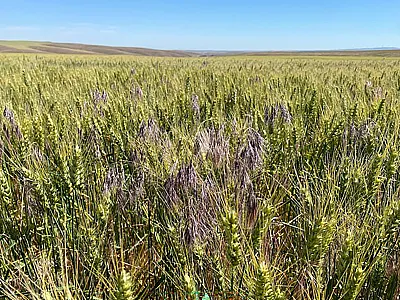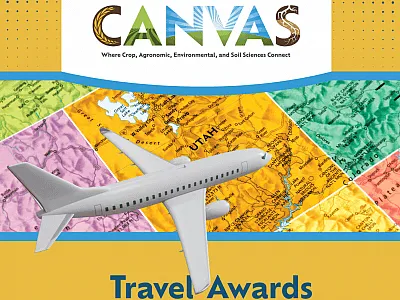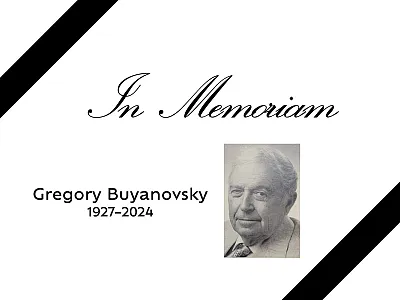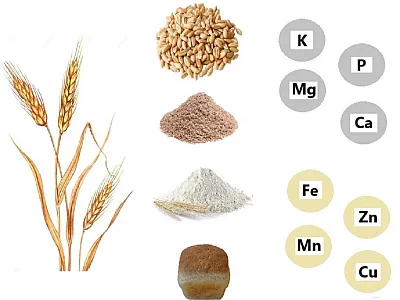Military veterans in agriculture
A specialty group to unite, collaborate, and to build comradery among veterans and their supporters
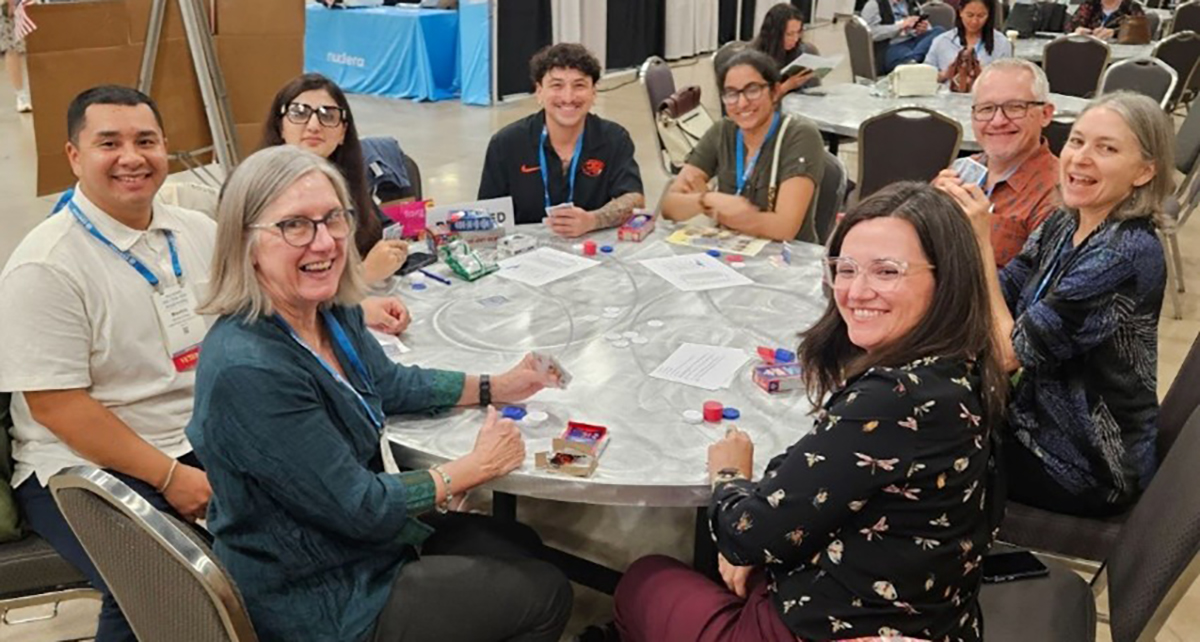
The Military Veterans in Agriculture specialty group is designed for veterans and supporters of veterans within the Societies. Its purpose is to support the advancement and promotion of military veterans in the agriculture sector while presenting a sense of community. This month, the chair of the group, Mauricio Soriano, discusses how the group contributes to the Societies and local community and what its plans are for the near future.
Greetings fellow ASA, CSSA, and SSSA members. My name is Mauricio Soriano, and currently I am chair of the Military Veterans in Agriculture specialty group. Additionally, I am a master’s student at California State University–Fresno in the Department of Plant Science and an Army combat veteran. I began my service in early 2011 and was honorably discharged in the fall of 2015. I served in the infantry and was stationed in Fort Carson, CO for my time in service. It was during this time that I deployed to Afghanistan both in 2012 and 2014. I am writing this article to make you aware of this specialty group, inform you of how we contribute to the Societies and local community, and let you know about our plans for the near future.
The Military Veterans in Agriculture specialty group is designed for veterans and supporters of veterans within the Societies as a forum to unite, collaborate, and to build comradery. The purpose of this group is to support the advancement and promotion of military veterans in the agriculture sector while presenting a sense of community. With a diverse set of skills and teamwork, we strive to incorporate our military training into civilian agricultural systems. Additionally, I would like to make it known that this specialty group is not restricted to veterans to join. This group is open to all Society members who are supporters of veterans.
It is important to have this specialty group because veterans represent the core values of patriotism and service to the country. Veterans have actively defended the country against threats, allowing citizens to enjoy their freedoms and liberties. This often involves facing danger, making personal sacrifices, and demonstrating courage and commitment to duty. Additionally, their training instills strong leadership qualities like discipline, decision-making, and teamwork, which can be applied in various aspects of civilian life.
Veterans continue to serve their communities through local organizations and initiatives. We find that the values of service, leadership, and teamwork that are promoted and practiced by ASA, CSSA, and SSSA coincide with those held by many veterans, and we would like to strengthen this partnership by empowering veterans to create, distribute, and apply new agronomic solutions to sustain the world.
What is a veteran?
According to the U.S. Department of Veterans Affairs, a veteran is defined as anyone who has served in active duty in the Armed Forces, Public Health Service, National Oceanic and Atmospheric Administration, or Environmental Science Services (U.S. Department of Veterans Affairs, 2019). The veteran must have earned any character of discharge other than dishonorable. The U.S. Armed Forces includes the Air Force, Army, Coast Guard, Marine Corps, Navy, and Space Force. Since the American Revolution, there have been more than 41 million Americans who have served in the Armed Forces with 16 million of those serving during World War II alone (Vespa, 2020). Additionally, the United States Census Bureau reported that in 2018, roughly 18 million Americans, or 7% of the adult population, were Armed Force veterans (Vespa, 2020).
"We find that the values of service, leadership, and teamwork that are promoted and practiced by ASA, CSSA, and SSSA coincide with those held by many veterans..."
Contributions to society
The American Institute for Research released a report in February 2024 investigating veterans who used their Post-9/11 GI Bill (PGIB) benefits and the degrees obtained and found that 54% of PGIB eligible enlisted veterans used their benefits with 47% completing a degree within six years (Radford et al., 2024). In fact, the six-year completion rate of an associate, bachelor’s, or graduate degree for veterans using their PGIB was about double that of the completion rate of an associate or bachelor’s degree for financially independent postsecondary students. The completed degrees were broken down to 12% associate, 21% bachelor’s, and 9% graduate as of June 30, 2019 (Radford et al., 2024).
In 2016, the USDA released an article comparing occupations of elderly rural veterans and those of working-age veterans. They found that elderly rural veterans were more likely to be working in the agricultural industry and were more likely to be self-employed farmers or ranchers. By comparison, about 19% of working-age veterans reported currently or previously working in manufacturing. The figure below displays the percentage of occupations for working-age and elderly rural veterans in 2015 (Farrigan, 2017).

Future outlook
Currently it is not known how many veterans are active within the Societies. Over my three years of attending the Annual Meeting (now known as CANVAS), I have met only a handful of veterans who have stood out of the crowd by wearing a red ribbon with “Veteran” on it, similar to those that say, “Past President” or “30+ Year Member.” I hope the number of veterans within the Societies will increase overall as they find they have a home here. In addition, I hope we can increase the number of members who identify as veterans by wearing a red ribbon during CANVAS, which often takes place during the week of Veterans Day. As a reminder, Veterans Day is held November 11 and is intended to thank and honor all those who served honorably in the military, both living and deceased, whether in wartime or peace.
The members of this specialty group plan to connect with veterans within the Societies by having discussions in our Circle within the Member Hub and hosting events during CANVAS like our annual poker night. Additionally, the group would like to be a space to network with other veterans and their supporters to share ideas and build connections. Lastly, with the launch of the pilot of the International Military Veterans in Agriculture travel fund, we hope to help veterans pursuing higher education attend CANVAS and learn more about the Societies and the work being conducted. We hope this travel fund will benefit current veterans within the Societies as well as those at universities who may not currently be involved in the Societies.
"With the launch of the pilot of the International Military Veterans in Agriculture travel fund, we hope to help veterans pursuing higher education attend CANVAS and learn more about the Societies and the work being conducted."
As mentioned, the International Military Veterans in Agriculture (IMVA) travel fund is in its first year of a pilot phase, and we hope that by the third year, the fund will be established with a total of $36,000 raised while we continue towards our long-term goal of raising $100,000. We thank the Agronomic Science Foundation, which has agreed to match up to $3,000 in contributions for the first two years to launch the fund. With a total of $6,000 we intend to award the funds to four student veterans to attend CANVAS beginning in 2025. Each awardee will receive $1,500 for costs associated with travel. This travel fund is restricted to veterans who are attending college and are enrolled in a science, technology, engineering, and mathematics (STEM) program. International veterans may apply as well. Applications must be completed on the Societies’ website where applicants will need to answer four essay questions and verify they are a veteran that was discharged under conditions other than dishonorable. We hope to start accepting applications for the first year of disbursements soon.
If you would like to contribute to the IMVA travel fund or get involved with the Military Veterans in Agriculture specialty group, please email me. Lastly, I highly encourage you to join our specialty group to keep up to date with any announcements, and remember, you do not have to be a veteran to join the group. Thank you for your time and consideration.
References
Farrigan, T. (2017, September 5). Veterans are positioned to contribute economically to rural communities. Amber Waves. https://www.ers.usda.gov/amber-waves/2017/september/veterans-are-positioned-to-contribute-economically-to-rural-communities
Radford, A. W., Bailey, P., Bloomfield, A., Webster, B. H. Jr., & Park, H. C. (2024). A first look at post-9/11 GI Bill-eligible enlisted veterans’ outcomes. American Institutes for Research. https://www.air.org/sites/default/files/2024-02/First-Look-Post-9-11-GI-Bill-Outcomes-Enlisted-Veterans-February-2024.pdf
U.S. Department of Veterans Affairs. (2019). Determining veteran status. https://www.va.gov/OSDBU/docs/Determining-Veteran-Status.pdf
Vespa, J. E. (2020). Those who served: America’s veterans from World War II to the War on Terror. United States Census Bureau. https://www.census.gov/content/dam/Census/library/publications/2020/demo/acs-43.pdf
Members Forum
This article is part of our Members Forum—a place to share opinions and perspectives on any issue relevant to our members. The views and opinions expressed in this column are not necessarily those of the publisher. Do you have a perspective on a particular issue that you’d like to share with fellow members? Submit it to CSA News. Submissions should be 800 words or less and may be subject to review by our editors-in-chief.
Text © . The authors. CC BY-NC-ND 4.0. Except where otherwise noted, images are subject to copyright. Any reuse without express permission from the copyright owner is prohibited.




